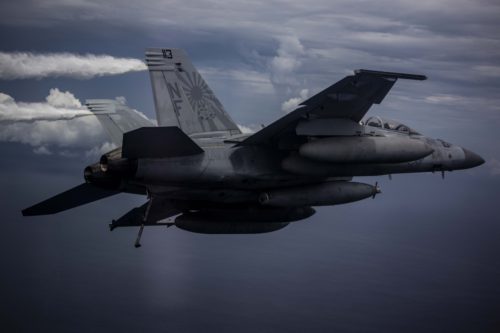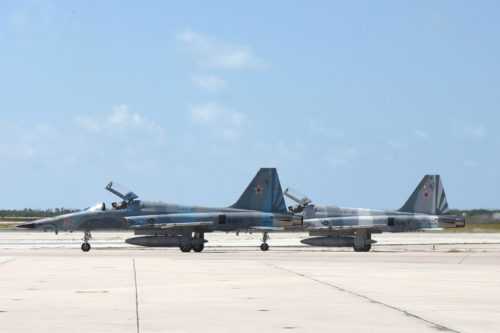South Koreans are unhappy with the tail flash of the U.S. Navy’s VFA-102 fighter squadron as it depicts the Rising Sun Flag (旭日旗). A photo of the jet with the Rising Sun Flag on its tail that was released by Pacific Air Forces caught the attention of the media in South Korea.

U.S. Navy photo by Lt. Cmdr. Joseph Stephens
Some Koreans commented online that the use of the flag by the U.S. military is ignorant of history. They felt that the U.S. military is not friendly to South Korea as well.
The Rising Sun flag was the war flag of the Imperial Japanese Army and the naval ensign of the Imperial Japanese Navy. It is currently used by the Japan Maritime Self-Defense Force in a modified form. The Japan Self-Defense Forces and the Japan Ground Self-Defense Force uses a different version with a gold border around the edges.

English: Los688 / Public domain
As the flag is used by the Imperial Japanese military in the past, it is considered offensive, especially in Korea. In 2018, the Japan Maritime Self-Defense Force withdrew from a naval fleet review in South Korea after the Seoul requested that Japanese ships participating in the review refrain from using the Rising Sun Flag.

U.S. Navy photo by Mass Communication Specialist 1st Class John M. Hageman / Public domain
The use of the Rising Sun Flag by U.S. military units is not recent. It was featured prominently on aircraft flown by VF-111, also known as the Sundowners.

U.S. Navy / Public domain

USN / Public domain
The Sundowners was disestablished in 1995 and in 2006 VFC-13 Det Key West was redesignated as VFC-111 and the unit assumed the ‘Sun Downer’ insignia and callsign of VF-111.

Other non-aviation units using the Rising Sun design include U.S. Fleet Activities Sasebo and the U.S. Army Aviation Battalion Japan.

USN / Public domain

United States Army / Public domain
Besides VFA-102, a EA-18G from VAQ-141 was seen with a Rising Sun Flag design on its tail in 2017 as well.
